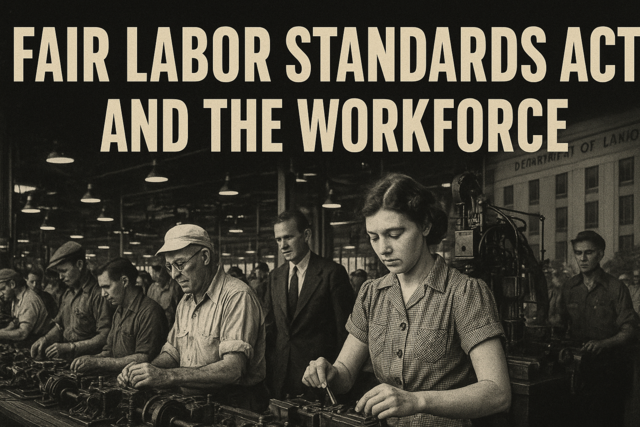Nearing the End of the Decision Making Process
Three Separate Aspects in Decision Making
Decision making is more than simply selecting an option from the ones you have discovered in the research step of the process. Remember, decision making begins with stating the decision that needs to be made, researching the options, selecting the one most appropriate for your needs, and implementing and evaluating the decision to ensure it is effective and appropriate.
Along the way, you have sought input from experts and family, and created a graphic organizer that iterates the pros and cons of the decision. Of course, this formal approach is not necessary for every single decision an individual must make in life, but it is definitely an excellent model for the more important choices. So, here you are facing the actual moment of decision making.
Now, choose. Review the options you have created with care, perhaps listen to that little voice in your head -- and decide. Why is it important to be rational and intuitive at the same time? Because both are important in the application of a decision.
For example, Ms. M. has completed her degree in nursing and has decided she wants to relocate, as she begins her career. She submits her resume to employment agencies across the country in order to see what types of opportunities would be offered to her. Not surprisingly, she hears back from doctors' offices, clinics, and hospitals in all 50 states. It's really quite overwhelming. She realizes she must use some form of criteria to make a decision, and begins by removing any offers that pay less than $50,000 to start, having figured that this was the base salary she would need to get started in her life. She is still left with an overwhelming number of choices, so she now divides them by professional environments. Upon reflection, she decides that she would not find working in a doctor's office challenging enough, so she now removes all of these offers from the list. Finally, she divvies up the remaining opportunities by location across the country and finds that there is an exceptional opportunity paying $60,000 to start in Minnesota, and another that sounds truly interesting in Florida; but the pay is only $50,000. Ms. M. forces herself to be honest and admit that she is not a cold weather person; even though the salary in Minnesota is very enticing, she knows she would not be happy waking up to snow, overcast winter skies, and freezing temperatures for a good part of the year. Therefore, she finally decides that Florida will be her final decision to begin her career, despite the fact that the pay is much less.
The previous example is an excellent demonstration of the use of both rational thinking and intuition in the decision-making process. While it is rational to choose jobs that offer the highest pay, that inner voice is also very helpful in making decisions, if you will only allow it to speak to you. Self-reflection is as essential to decision making as reasonableness and sensibility.
Look Ma � I'm Implementing!
Implementing a decision requires a step-by-step course of action, as well. It is advisable to create a framework for action, inform all stakeholders of the final decision that has been made, and execute. In fact,
Execution=Implementation
And once a decision is made, it is vital to translate it to action in a reasonable time frame; otherwise, the entire process has been an exercise in futility. So how does one go about implementation of a decision in an orderly, rational manner that is sure to result in the realization of the goal from the outset?
Let's return to the graphic organizer tool that has been helpful in all aspects of decision making, from listing the components of problem solving, to accessing creativity and applying it appropriately, and understanding the tools of decision making to becoming comfortable with the list of rules that frame the selection process. In other words, develop a visual aid in the form of a flow chart that divides the implementation process into manageable steps.
Let us return to Ms. M. as an example for implementation. Remember that she has decided to accept the job in Florida, despite the fact that the pay is lower. While we applaud her decision making, she has only moved from one step to the next. There are many goals she will have to realize before she finds herself standing in front of her employer for her first day of work. Her implementation plan may look something like this:
1. Find a new residence in the area of relocation and secure it with the required payment. Use all of the online resources at my disposal.
2. Pack up belongings. Close out all personal and professional responsibilities in current location.
3. Hire a mover, resettle into new abode.
4. Attend employer orientation. Begin work.
Now, that is an example of implementing a decision, and it is evident that it involves a great amount of detail, problem solving and creativity for the decision to come to fruition. Let us examine a scenario in which decision making must occur in a professional setting.
A manufacturing firm that creates plastic ware, including cups, plates, utensils, and other items recently retained the services of a consulting firm with expertise in management realignment and process integration. Company XYZ has been producing their products the same way for the past 15 years and has found they are losing market share since the recession of 2008. Company principles do not want to have to dismiss any employees, and have not, to this point, because they are personally committed to their workforce � many of whom have been with them for several decades. However, it is obvious that changes must occur, or there will be no company to employ anyone. After six weeks of assessment in all aspects of organizational operation, the consultants have come back with some progressive -- even cutting-edge -- recommendations that will require an entirely new mindset, plus a willingness on the part of the owners to invest in new technology, and a guarantee from workers they are willing to learn how to manipulate new machinery and technology for the betterment of the company and the promise of continued employment.
The consultants have worked tirelessly to develop a list of alternatives, or choices, that the employers can select from when deciding where to commit limited funding that will realize the greatest results. They have chosen to purchase several new machines to be placed in the factory, which will allow workers to collaborate on the process of developing their product more cheaply. Company principles were also given a variety of new management scenarios that require collaboration and team-work, versus the historic management style. The time has come to implement and execute the plan.
But, as the reader can see, that is not a simple process, by any means; it instead requires more work to develop a plan of action for implementation. In this case, two different execution models are created in collaboration with the workers who will be affected. In other words, all levels of management sit down with the owners and consultants to create a step-by-step action plan that will result in the internalization and realization of a new management paradigm. Professional development is included. The same process is utilized with the workers, who also feel valued for being included in the implementation planning process. Ultimately, the plans are implemented and Company XYZ is on the way to a profitable year for the first time in half a decade.
Implementation Is a Process
If the reader thinks that all of the steps leading up to the ultimate act of making a decision are challenging, the process of implementing a decision is no less so. It is not as if a decision is made and then the decision-making individual or group can then sit back and coast. Not at all. Execution of a decision requires more thoughtful problem solving and planning, and creativity may be necessary to see a decision through to the end.
Decision-making implementation can be fraught with as much anxiety and second-guessing as any other part of the process � from naming the decision that must be made, to researching the options and selecting a choice that seems most appropriate for the circumstances. Implementing a decision is like getting married. Sure, you may have chosen your partner for life, and there is something exhilarating about the finality of this decision; but the true work has only begun.
Implementing a decision is a three-part action.
First, all stakeholders must have buy-in.
Second, the work that is required for implementation must be prepared � and that can be a multi-step process, in itself, as we saw with Company XYZ and Ms. M. Preparation for execution should incorporate a communication strategy to inform stakeholders of the decision that has been made. An assessment of the resources that will be necessary to implement the decision is also required. Finally, a timeline for implementation must be developed as a guide for follow-through.
Finally, the third part of implementing a decision is actually doing the work. Little more need be said about this, it looks different in every scenario, but it is the goal of making a selection.
Implementing a Decision Includes Monitoring the Progress of the Choice
Yet, even so, the implementation process is not over. It would seem obvious that with the amount of mental, emotional, and physical work that goes into all aspects of decision making � monitoring the progress or outcome of the choice is essential. In doing so, you find out if the decision was the correct one for your purposes. In other words, are the results what you expected them to be? Is the decision as fulfilling as you had hoped.
If not, it is best to admit this early on, because it may require you to revisit the decision-making process, from beginning to end, once again. However, it is possible to pose to the reader that if all of the steps are given due consideration and followed, it is unlikely it will result in the wrong decision for your needs.
For example, Ms. M. did move to Florida, and has found that she is much happier in the warmer climate, even with a salary that was $10,000 less than what she could have been making. And, Company XYZ has turned a profit for the second year in a row; and its employees � including management and workers � now operate in a more collaborative environment. Everyone claims to be more fulfilled in this new work environment.
To Recap
Implementation or execution is the fourth, and final step, in the decision-making process. You have made a choice and now comes the heavy-lifting that goes with planning for the everyday application of the choice � be it big or small, life-changing, or seemingly inconsequential. Remember: Monitoring the progress of a decision as it is realized is as important as making the decision is itself.
All decisions have some type of impact in life.





























